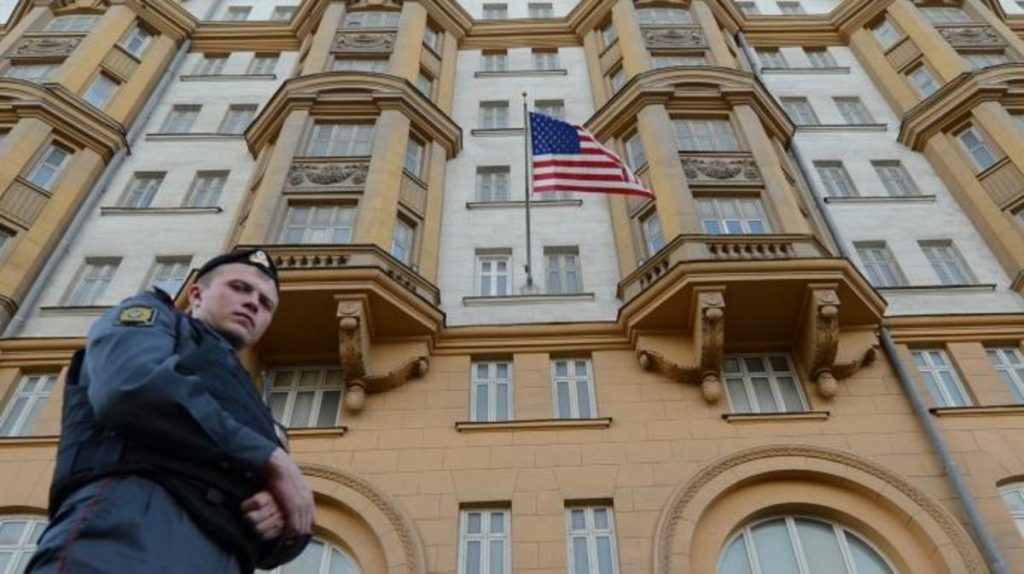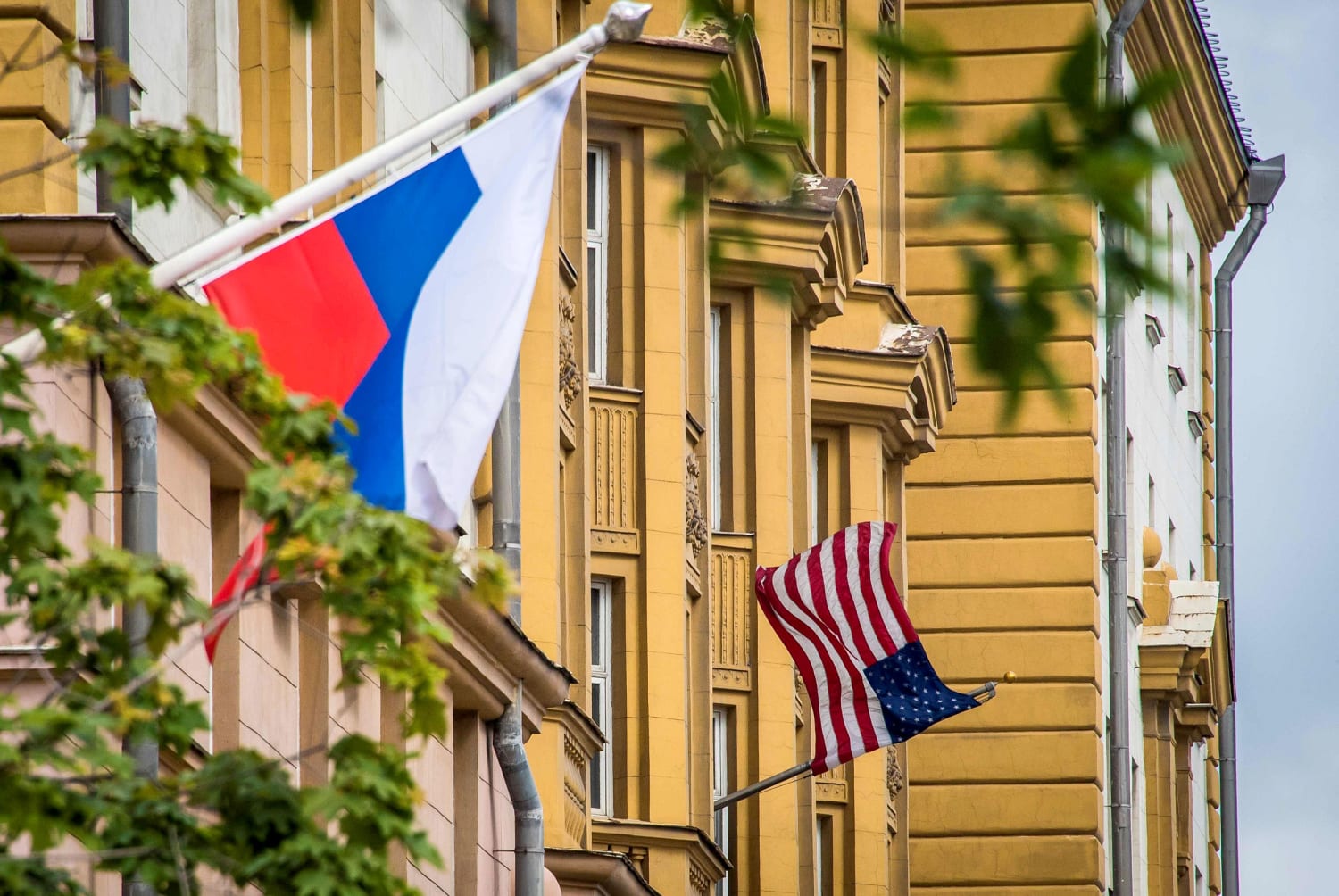Russia has expelled the U.S. deputy chief of mission to Russia, Bart Gorman, a State Department spokesperson said on Thursday, warning of a U.S. response amid heightened fears of a Russian invasion of Ukraine.
“Russia’s action against our DCM was unprovoked and we consider this an escalatory step and are considering our response,” the spokesperson said.
It was not immediately clear what justification Moscow gave for the expulsion, but it comes during a months-long standoff over a Russian buildup of more than 150,000 troops near its border with Ukraine.
U.S. officials warned the risk of a Russian invasion remained high and that Russia may attempt to fabricate a pretext for a conflict, despite Moscow saying it was moving some of its troops away from the border. read more
Alongside the border tensions, the United States and Russia have been engaged in a tussle over their respective diplomatic presences in each others’ capitals and Moscow said in December that U.S. Embassy staff who have been in the post for more than three years should return home.
READ ALSO: Palestinian prisoner threaten to set fire to Israeli detention centers in protest at repression
The spokesperson said Gorman, the second most senior U.S. official at the U.S. Embassy in Moscow, had a valid visa and had been in Russia for less than three years.
“We call on Russia to end its baseless expulsions of U.S. diplomats and staff and to work productively to rebuild our missions,” the State Department spokesperson said. “Now more than ever, it is critical that our countries have the necessary diplomatic personnel in place to facilitate communication between our governments. ”
You may recall that, former President Barack Obama expelled 35 Russian diplomats as retaliation for a series of cyber-attacks during the 2016 election. And on Sunday, Russian President Vladimir Putin responded to U.S. sanctions by ordering the country to cut 755 of its employees in Russia.
Americans who lived through the Cold War might be experiencing a bit of déjà vu. Because in the 1986, the Soviet Union and the United States had a similar round of tit-for-tat expulsions.
It all started in March of that year, when the U.S. ordered the Soviets to remove 25 of their diplomats at the United Nations headquarters in New York City. But, as the Los Angeles Times reported, the U.S. didn’t actually have the authority to kick out U.N. diplomats who hadn’t been found guilty of committing crimes or abusing their diplomatic privileges. The overreaching order was considered something of an embarrassment for the United States.
In “apparent recognition” of this, President Ronald Reagan’s administration reacted in September by claiming that the 25 diplomats they’d wanted out had been spies, causing “embarrassment and irritation at the U.S. Mission to the United Nations,” the L.A. Times explained.
The situation escalated in October when the Soviet Union ordered five American diplomats out of Moscow, claiming that they too were spies. According to the L.A. Times, there was “no precedent for such a mass expulsion of Americans from Moscow in the 53-year history of U.S.-Soviet relations.”
Just a few days later, the U.S. upped the ante by ordering 55 Soviet diplomats and other personnel out of the Soviet embassy in Washington, D.C., and the consulate general in San Francisco—at the time “the largest number of Soviet diplomats ever expelled from the United States,” reported The New York Times.
The Soviet Union responded the very next day, with a twist. It announced it was expelling five Americans from the U.S. embassy in Moscow—but it was going a step further, and barring 260 Soviet nationals from working at the embassy or as hired workers for U.S. diplomats. (The Soviets said it was 260; the Americans said it was less than 200.)
The embassy’s day-to-day functioning took an immediate hit. Many of these employees worked as maids, butlers, cooks, mechanics, secretaries, and clerks, and a large portion worked as household employees for Americans. The week these workers left, The Washington Post reported that U.S. Marines chipped in to wash dishes and bartend during an embassy reception; Donna Hartman, wife of Ambassador Arthur A. Hartman, stepped in to help cook food; and her husband was forced to (gasp!) become his own chauffeur—aka drive himself to work.
Soon after, Ambassador Hartman announced that the State Department would “send a small rescue mission of American blue-collar workers to take over many of the chores that used to be done by Soviet personnel,” reported the L.A. Times. But it was clear that the Soviet Union’s withdrawal of its own workers had dealt a big blow to the U.S. in the expulsion wars.
After the Soviet Union was dissolved in 1991, many policies were changed, and today Russian nationals once again work in U.S. diplomatic offices. In fact, Putin’s newest cuts will likely put a lot of Russian nationals out of work. According to The Washington Post, 867 of the United States’ 1,200 employees in Russia in 2013 “were designated ‘Foreign National Staff,’ most of them probably Russian nationals.” Cutting 755 employees will mean cutting jobs for both Americans and Russians.
For the 200-some workers the Soviet Union forced out of their jobs in 1986, this too would be nothing new.


